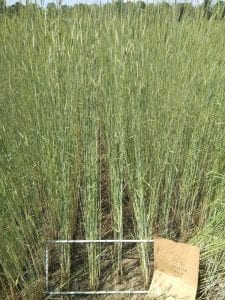I made a lot of new friends this summer, but the one I got closest with was my quadrat. Since they were used so commonly in the lab I decided to focus this week’s blog on them. A quadrat is a metal, rectangular frame used to assess a small area of habitat selected at random to quantify values such as the distribution of plants, weed pressure, yield or biomass. Our quadrats ranged from a size of .25 to .5 square meters. In most sampling events, forage or crop cuts were taken with the assistance of a quadrat for accurate results that can then be applied to a larger scale.
Using various random placement techniques, the quadrats were laid across a certain number of rows or in the vegetation perpendicular to a cardinal direction. Samples were then clipped at various heights depending on the experiment. The crop, or crops of interest were next placed in one bag and the weedy species would be identified and bagged separately. Identifying the weed species was my favorite part because it was both exciting to learn and memorize new species and in a way very relaxing when considered work. In some scenarios, we would also separate seed heads from stalks.
Although it does not sound very exciting, I actually really enjoyed this lab task. It was gratifying to give the plots a haircut while sitting in the sun, listening to music, learning a lot and grilling my coworkers with conversation and questions.


